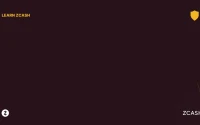Julian Vance: Data-Driven Analysis
[Generated Title]: IEA's Energy Forecast: A Reality Check or a Convenient Curveball?
The International Energy Agency (IEA) just dropped a report with a forecast that’s… let’s just say, it's raising eyebrows. After pushing a narrative of peak oil demand, they're now suggesting oil and gas demand could keep growing until 2050. That’s a pretty significant shift, and it demands a closer look.
The Numbers Game
The IEA is now projecting oil and gas demand to hit 105 million barrels a day in 2035 and 113 million in 2050. That's up from 100 million in 2024. According to a recent report, IEA: World’s Appetite for Oil, Gas to Grow, this increase is expected to continue for decades. On the other hand, we have Australia, which is quietly crushing it in solar. They installed 5.2 GW of solar capacity in 2024, bringing their total to 40 GW. To put that in perspective, their annual solar installations now exceed all installations up to the end of 2015 – a total of 5.1 GW. (That's a growth rate that would make any tech company jealous.)
But here’s the kicker: despite this solar surge, Australia didn’t even crack the top ten markets for annual installations globally. This raises an important question: if a country can add more solar in a single year than it had in its entire history just a decade ago and still not be a top player, what does that say about the scale of the energy transition challenge?
The IEA attributes its revised forecast to a potential policy shift in the US towards fossil fuels and a potentially slower EV adoption rate. Okay, fair enough. But let's dig a little deeper. What’s driving this potential slowdown? Is it consumer hesitancy, infrastructure limitations, or something else entirely? The report doesn't specify, and that's a pretty big omission.

And then there’s the LNG factor. Final investment decisions for new LNG projects have surged, with 300 billion cubic meters of new annual export capacity slated to come online by 2030. That’s a 50% increase in global LNG supply. This number is… well, it’s hard to reconcile with any serious commitment to decarbonization. It's like ordering a diet soda with a triple cheeseburger. What's the point?
Australia's Solar Success
Australia's rooftop solar penetration is genuinely impressive. 44% of free-standing homes have solar systems, and in Queensland and South Australia, it's closer to 50%. In South Australia, rooftop solar alone can routinely power the entire state for over four hours around midday. (This is the kind of data that I find genuinely exciting; it shows what's possible.)
But, and there’s always a but, even with this success, solar only meets about 20% of Australia’s total electricity demands. 20% is nothing to sneeze at, but it also shows the limitations of relying solely on solar, especially without adequate storage solutions.
The IEA also notes that Australia faces challenges with grid connection approvals, congestion management, and fragmented access arrangements for utility-scale solar projects. These hurdles increase costs and risks. So, while Australia is installing record amounts of solar, it's not exactly smooth sailing. It's like having a Ferrari but being stuck in rush-hour traffic.
One more thing that caught my eye: Australia is reclassifying residential solar systems, increasing the size definition from 10 kW to 15 kW. This suggests a trend towards larger residential systems, which is a good sign, but it also reflects the growing energy demands of modern households.
So, What's the Real Story?
The IEA's revised forecast feels like a convenient curveball. It's a data point, sure, but it's also a narrative shift that seems to accommodate existing fossil fuel interests rather than driving a genuine energy transition. The Australian solar data offers a glimmer of hope, but it also highlights the massive scale of the challenge. We're not even close to weaning ourselves off fossil fuels, and wishful thinking won't change that.










